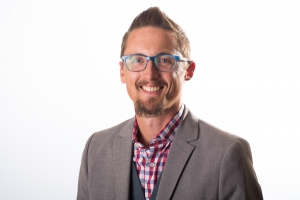The Rebirth of Generosity: A response to Leon Neyfakh’s Boston Globe article “Why We Give to Charity”
When people think more, they are less generous. How do you feel about that? Leon Neyfakh promotes this hypothesis in his new Boston Globe article “Why We Give to Charity.” Nonprofit service organizations like Law For Change and Campbell & Company have posted the provocative article for website visitors to read. It has been swirling around philanthropy-related twitter feeds for all to see. I bumped into it on a daily news blast from the Chronicle of Philanthropy. I love its trend-bucking subversion. But I found its case truly unconvincing. So much so, I’m firing back with some neglected facts in the oversimplified case.
Deborah Small’s conclusion that deliberate thinking decreases generosity is rooted in a less-than-reliable study of donations. Her experiment with George Loewenstein of Carnegie Mellon University and Paul Slovic of the University of Oregon lacked the realistic nuances involved in informing donors before asking for donations. The experiment created a dichotomy. It demonstrated that people gave more when shown only a hungry girl’s picture, name, and age and less when given facts about a famine. It is quite sensible that facts about an intractable problem would discourage action. But those aren’t the only facts to present or relevant analysis to provide. So concluding from this limited study that “more facts means less giving” is building a hasty generalization on a false dichotomy. To break apart that false dichotomy, we need to ask the question: What other facts could also be shared to increase giving?
Solving Problems
There are many facts to share with donors that actually increase their giving. For example, you can show the results from a program that is really solving a problem. More facts about real progress inspire giving. We find that increasing confidence in a program can increase giving to an organization. However, too many nonprofits go on and on about the “need” or the “problem” rather than quickly moving to their “solution” and providing concrete stats and stories to validate progress. The experiment would have different results if Small and her team compared donations from the personal presentation about the girl to one that also included the success rates of the feeding program and its positive impact on the community.
Rebuilding Confidence in Charitable Work
Providing concise analysis about organizational performance can have the same growth effect in one’s generosity. Although the article argued that analyzing an organization reduces giving (e.g., just mentioning its overhead), that claim rests on a “bon sauvage” assumption. I have no space here to introduce 18th Century romantic primitivism so here’s my point: Analysis and diligence would ruin people’s giving if we were all good-hearted gullable blokes with blank slates (the infamous tabula rasa). But just like the false dichotomy in the experiment, this is not a trustworthy assumption. We do not have pristine pictures of charity work dancing in our hearts.
Most American donors have heard more than one story about charities misusing money or failing to fulfill their mission. CNN, the Chronicle of Philanthropy, and even the Boston Globe all run stories for people to read about charity gone wrong. Most people already know charities have problems and get nervous about giving because of those facts. Providing a platform to rebuild confidence in the high-integrity, high-performers among the 501©3 bunch actually releases people to give again, and to give more as they verify real outcomes. We have seen this process play itself out with most of our clients over time.
I do agree that the initial disequilibrium caused by nonprofit operational questions and complex problems tends to stunt giving. But that is not the end of the story and most people have already fallen into that sea of disequilibrium. The scandalous news stories and charity evaluators have bathed the majority of Americans in the reality of underperforming and untrustworthy charities. That is why clear communication of outcomes is non-negotiable today. Transparent analyses of charitable organizations have a vital role to play in motivating greater levels of giving. Givers have already found reasons to question the results of their generosity. Now it’s time to rebuild the trust necessary for confident giving.
At our philanthropic advisory firm Excellence in Giving, we have seen careful analysis and thoughtful giving turn a $50,000 gift into a $1 million commitment. That is what confidence can do in a world of nervous givers. We agree with Jonathan Baron, psychologist from the University of Pennsylvania, who conducted one of the studies in Neyfakh’s article. “Instead of spreading a number of small gifts across 10 different charities, he now focuses it on a couple of organizations that he believes will do the most with his money.” Getting confident and comfortable with the performance and impact of an organization does produce bigger gifts, often to fewer organizations that rise to the top. One of the common myths about major donors is that they give big gifts. We tend to find major donors who give a couple big 6 or 7-figure gifts and then a couple dozen more $5,000 to $10,000 tokens. Their giving becomes over-diversified because they don’t have the confidence to give more than 4 figures to all the others who ask.
The Rebirth of Generosity
The research Neyfakh has collected to demonstrate a reduction in giving when people start thinking has some truth to it. Giving will decline when givers get their first whiff of how complex problems are and how many charities are well-intentioned but poorly managed and ineffective. Some givers will never recover from that initial shock. Steve Jobs never did so he closed his foundation a year after opening it. He told reporters later that it would take more work to do it well than he could invest. However, many givers do recover and come back stronger than ever. They find the right blend of tools, advisors, and a little trial-and-error to assist them in giving well. The self-satisfying emotion of giving re-combines with the growing confidence from analyzing organizational performance. The combination of emotion and thoughtfulness births larger gifts than ever before.
One of our clients recently told us: “I could have never made that $1 million gift if it weren’t for your help.” Every day we see foundation officers and giving advisors like ourselves and charity evaluation platforms like Nonprofit Analytics turning $100 gifts into $200 gifts and $10,000 tokens into $100,000 votes of confidence. People often need a little help building their confidence. Don’t believe the wild conclusion from economist John List’s questionable “matching gift study” (cited in the article): “People get utility or satisfaction out of giving to a good cause. And they do not care how much public good is provided.” The Money For Good study demonstrated through more careful research that 85% of donors do want to give to effective charities. Most just don’t do the necessary homework or know where to start. Advisors and tools that help donors build confidence in effective organizations aren’t sending donors into charitable paralysis but rather helping them recover from that inevitable experience.
So don’t get too worried about the maturation process that all givers have to go through. There is an initial shock and sometimes paralysis. But greater generosity can soon follow. And I am committed to facilitating the rebirth of a generosity that comes from the heart and goes through the head.
Go to Blog Home





Add Your Comments
Reader Comments
0 comments